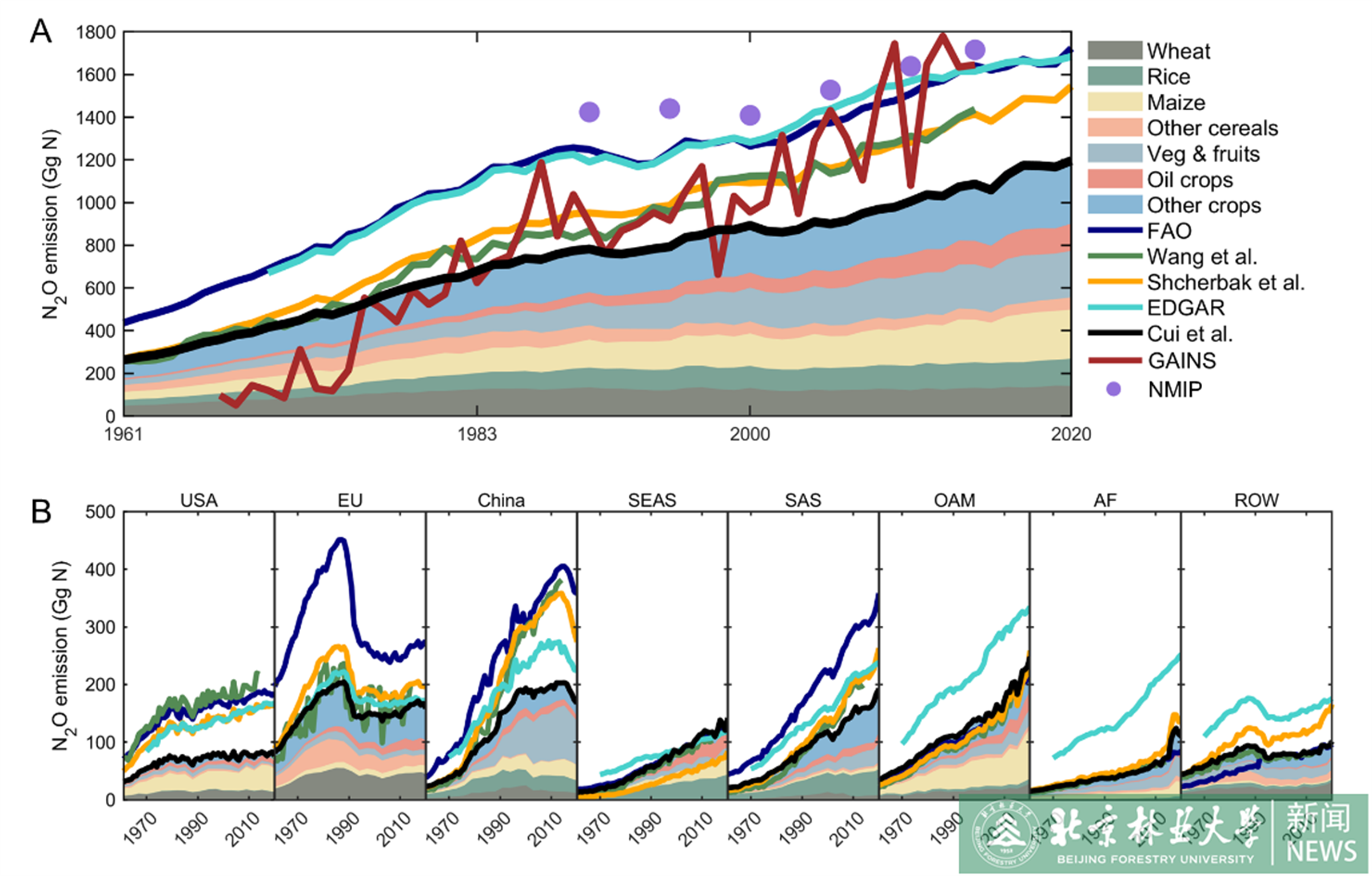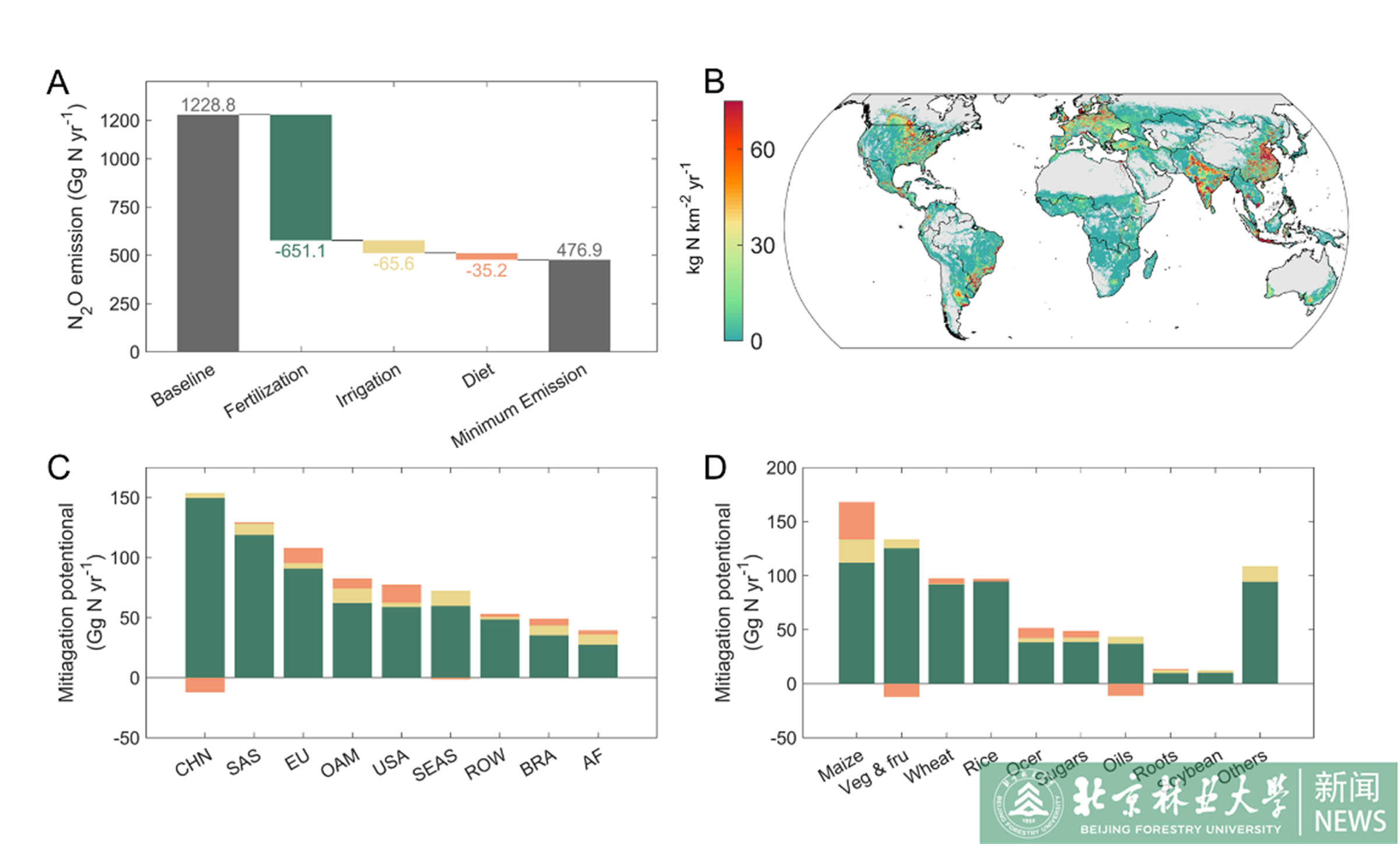Latest news
Recently, Cui Xiaoqing from the School of Grassland Science at BFU, in collaboration with Peking University and other entities, embarked on a significant academic initiative. They were invited to author a review article for One Earth (Q1, IF=16.2), a publication under Cell Press. Entitled "The global potential for mitigating nitrous oxide emissions from croplands," the article provides a detailed explanation of how nitrous oxide (N2O) is produced and released from croplands, identifies trends in emissions over time and across locations, explores the potential for emission reductions, and highlights urgent areas of research and policy-making to address this challenge.

Nitrous oxide (N2O) is a long-lived stratospheric ozone-depleting substance and greenhouse gas, which has a 100-year global warming potential 273 times higher than that of carbon dioxide. The concentration of atmospheric N2O has increased by more than 20% from 270 parts per billion (ppb) in 1750 to 331 ppb in 2018.

Cropland is the largest contributor of anthropogenic N2O emissions, accounting for approximately one-third of total anthropogenic N2O emissions. To sustain an increasing global population and the demand for food, N2O emissions are projected to increase by 35%–60% between 2005 and 2030, largely driven by excessive use of synthetic nitrogen (N) fertilizers and manures to croplands. Reducing cropland N2O emissions while maintaining crop production is thus conducive to achieving low levels of climate warming and preventing stratospheric ozone depletion.It is prerequisite to have a comprehensive understanding of cropland N2O production mechanisms and an accurate assessment of cropland N2O emissions.

This review summarizes the up-to-date datasets and approaches to provide spatially explicit and crop-specific assessment of the global mitigation potentials. The research shows that global cropland N2O emissions have quadrupled to 1.2 Tg N2O-N year−1 over 1961–2020. The mitigation potential is 0.7 Tg N2O-N without compromising the crop production, with 86% from optimizing nitrogen fertilization, three-quarters (78%) from maize (22%), vegetables, and fruits (16%), other crops (15%), wheat (13%), and rice (12%), and over 80% from South Asia, China, the European Union, other American countries, the United States, and Southeast Asia. More accurate estimation of cropland N2O mitigation potentials requires extending the N2O observation network, improving modeling capacity, quantifying the feasibility of mitigation measures, and seeking additional mitigation measures.
Cui Xiaoqing is the first author of the paper. This work was supported by the National Natural Science Foundation of China (42225102 and 42361144876 and 42207378) and other projects.
Paper link: https://doi.org/10.1016/j.oneear.2024.01.005










